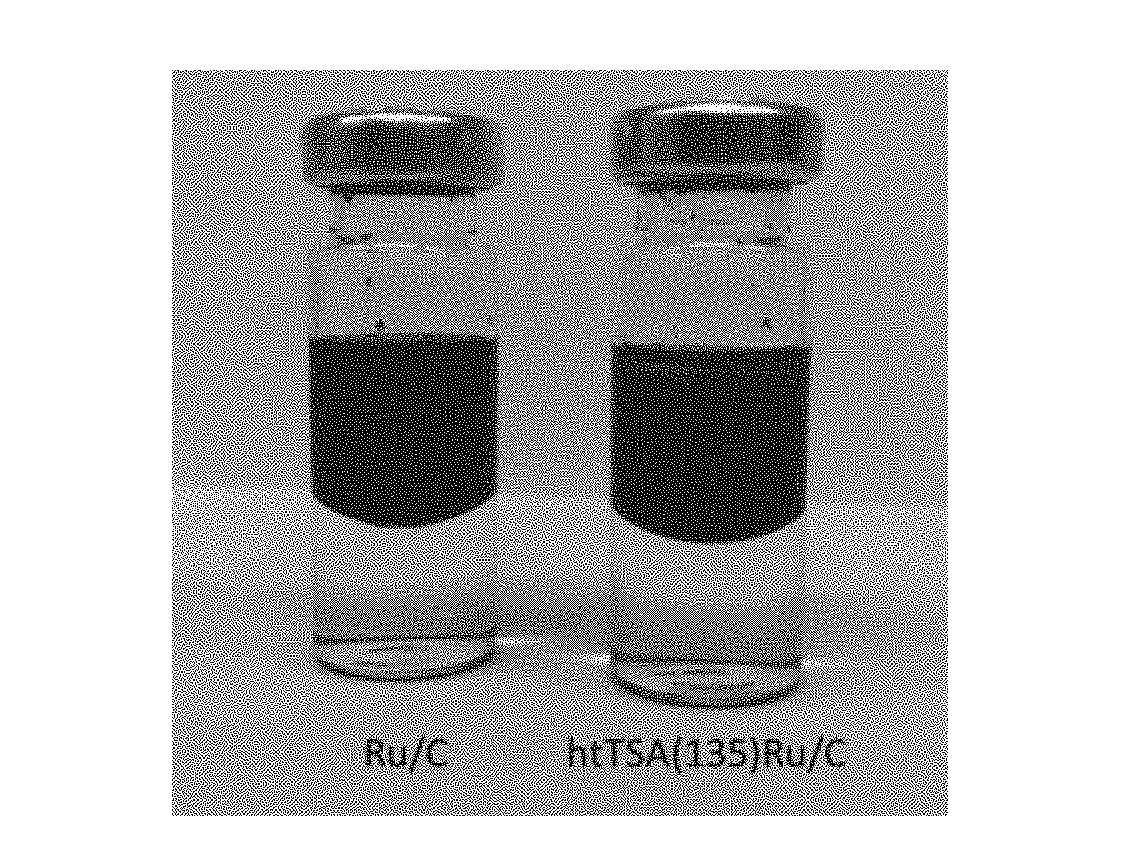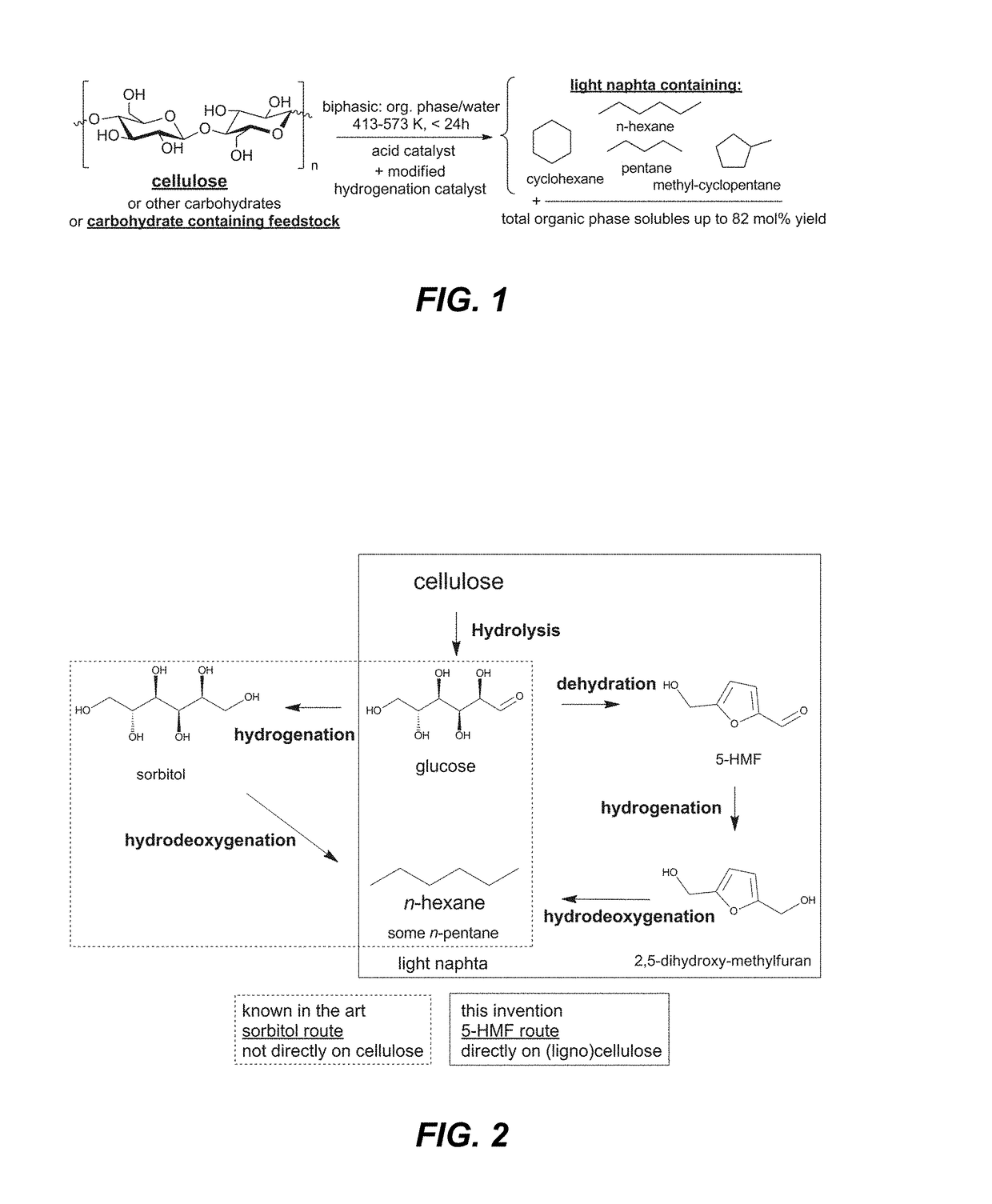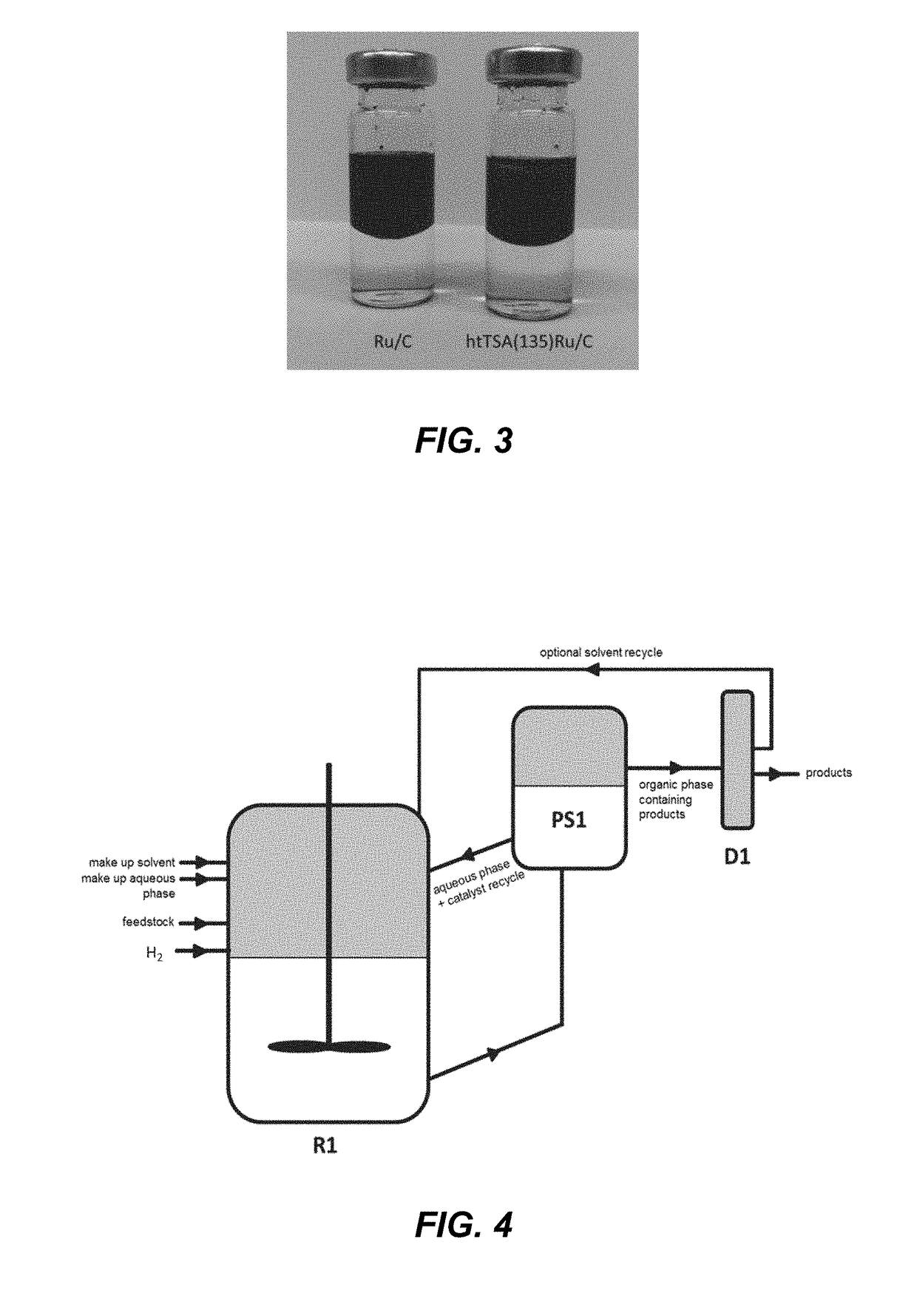Biphasic solvent catalytic process for the direct production of light naphtha from carbohydrate-containing feedstock
a carbohydrate-containing feedstock and biphasic solvent technology, which is applied in the production of liquid hydrocarbon mixtures, bio-feedstock, petroleum industry, etc., can solve the problems of high cost and high energy demand, inability to easily convert short alkanes (containing less than 4 carbon atoms) into light naphtha fractions, and large targeted volume and markets
- Summary
- Abstract
- Description
- Claims
- Application Information
AI Technical Summary
Benefits of technology
Problems solved by technology
Method used
Image
Examples
examples
[0076]The examples illustrate the process disclosed and claimed herein. The examples do not limit the scope of the disclosure in any fashion. The examples show the essential processing variables for light naphtha production using the biphasic catalytic system described herein. The examples show the formation of naphtha in one step from carbohydrates and carbohydrate-containing feedstock like (ligno)cellulose.
Standard Operating Procedure for the Examples
Chemicals:
[0077]Chemicals including carbohydrates (glucose, avicel PH 101 cellulose, fructose, etc.), H4SiW12O40, Ru / C, were obtained from Sigma-Aldrich. These reagents are also available from other commercial suppliers.
Hydrogenation Catalyst Synthesis:
[0078]Hydrothermal modification treatment of Ru / C with H4SiW12O40 was carried out as follows: A typical modification of commercial 5 wt % Ru / C is illustrated. Ru / C (1 g), tungstosilicic acid hydrate (0.25 g) and water (40 ml) were loaded in a 100 ml stainless steel batch reactor (Parr I...
examples 1a , 1b and 1c
Examples 1A, 1B and 1C
[0084]Light Naphtha from Cellulose—Example 1A
[0085]Cellulose, a polysaccharide of glucose with β(1,4) glycosidic bonds, was converted according to the disclosure into light naphtha. The typical catalytic procedure described above was used with the following quantities: 2 g of cellulose, 5 g of TSA hydrate (corresponding to 71 mM TSA in the aqueous phase), 0.5 g htTSA(135)Ru / C, 20 ml of deionized water and 20 ml of n-decane. Results are found in Table 1.
TABLE 1Yields [%]Organic phaseAqueous phaseLIGHTC5 and C6TOTALTOTALNAPHTHAoxygenatesORGHexitolsAQUEOUS481065715LIGHT NAPHTHA = n-hexane + MCP / CH (mainly methylcyclopentane and some cyclohexane) + n-pentane.C5 and C6 oxygenates = Other oxygenated organic phase (decane) solubles with 5 or 6 carbon atoms: mainly 2,5-dimethyltetrahydrofuran and 1-hexanol.hexitols = sorbitol, mannitol and their anhydrides (i.e., isosorbide).TOTAL ORG = total molar yield of products analyzed in the organic phase (besides light naphtha ...
example 2
Determination of the H-Factor for Ru / C and Different Modified Ru / C-Based Redox Catalyst
[0091]Separate sets of experiments were carried out for the competitive hydrogenation reaction between glucose and 5-HMF according to the illustrative protocol no. 2. The H-factor was determined for a set of different catalysts: unmodified Ru / C; hydrothermal treated htRu / C and two hydrothermally modified catalysts that were pretreated in either a 2 or 135 mM solution of TSA.
[0092]One graph (FIG. 6) shows the kinetic profile of the glucose hydrogenation experiments according to the protocol, while the other graph (FIG. 7) shows that of 5-HMF hydrogenation. The two graphs in FIG. 6 and FIG. 7 nicely illustrate that modification of the Ru on carbon catalyst with HPA modifiers like H4SiW12O40 drastically impact the hydrogenation selectivity. The more concentrated the HPA solution of the hydrothermal solution, and the more HPA immobilizes on the catalyst, the lower is the hydrogenation capacity of gluc...
PUM
| Property | Measurement | Unit |
|---|---|---|
| temperature | aaaaa | aaaaa |
| temperature | aaaaa | aaaaa |
| hydrogen pressures | aaaaa | aaaaa |
Abstract
Description
Claims
Application Information
 Login to View More
Login to View More - R&D
- Intellectual Property
- Life Sciences
- Materials
- Tech Scout
- Unparalleled Data Quality
- Higher Quality Content
- 60% Fewer Hallucinations
Browse by: Latest US Patents, China's latest patents, Technical Efficacy Thesaurus, Application Domain, Technology Topic, Popular Technical Reports.
© 2025 PatSnap. All rights reserved.Legal|Privacy policy|Modern Slavery Act Transparency Statement|Sitemap|About US| Contact US: help@patsnap.com



